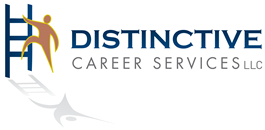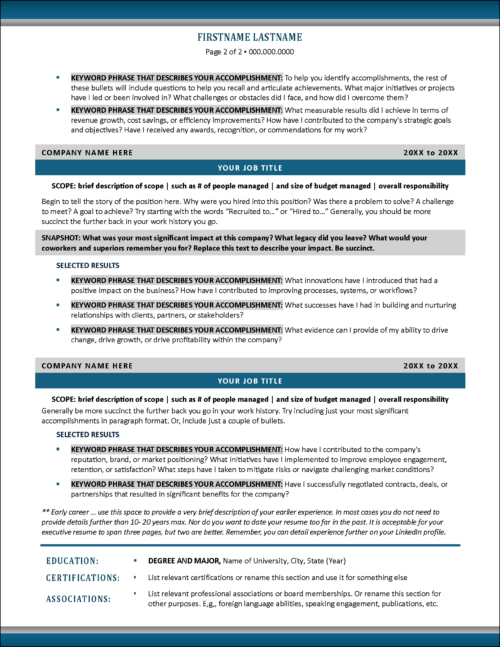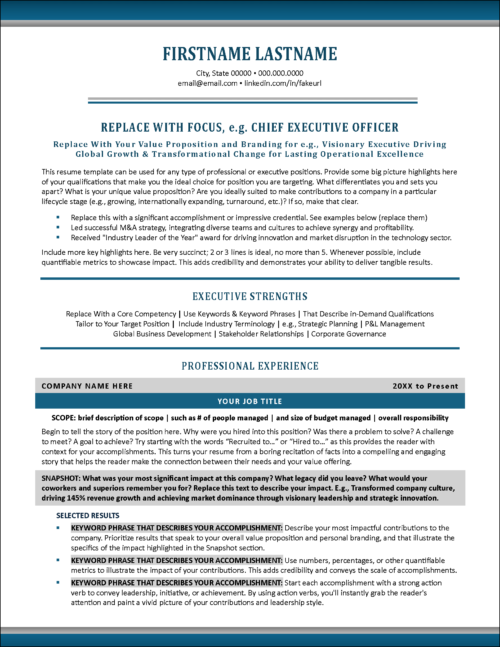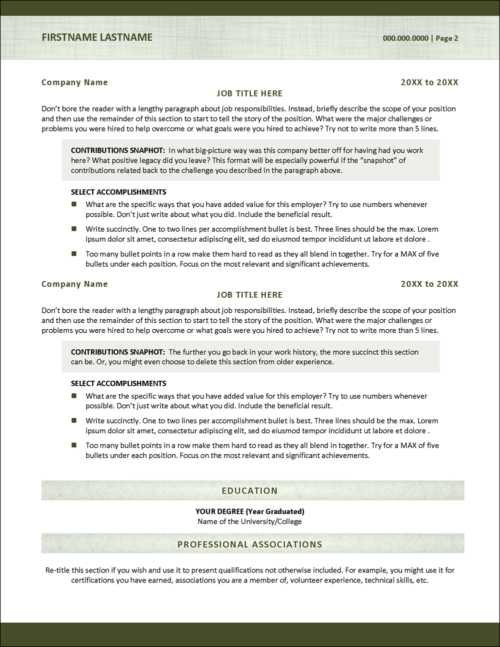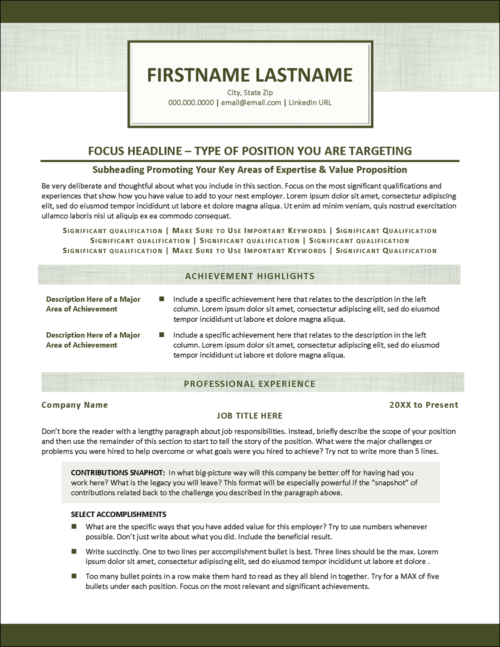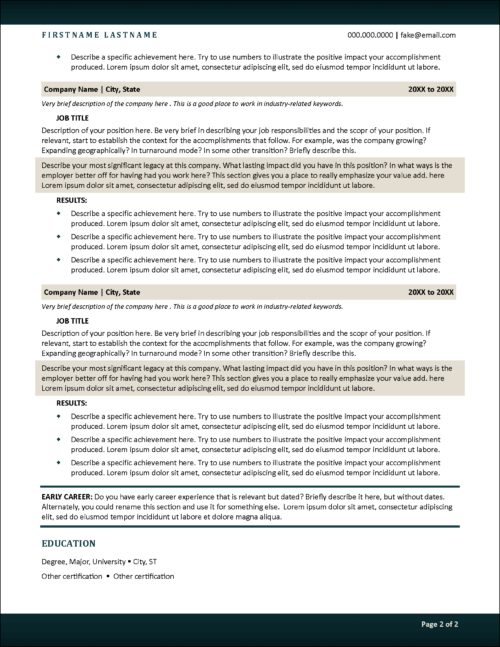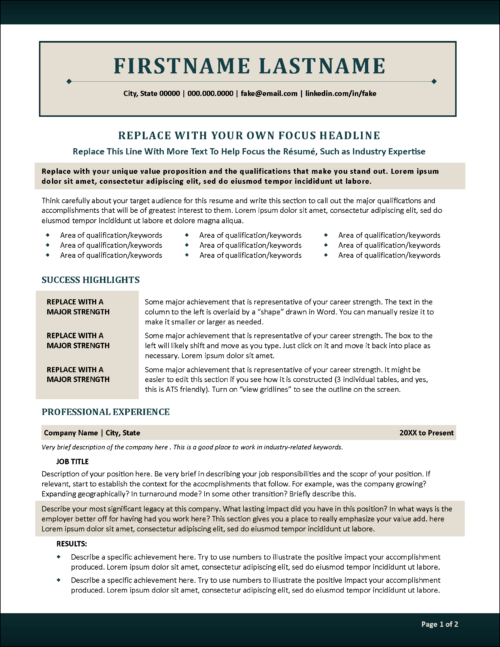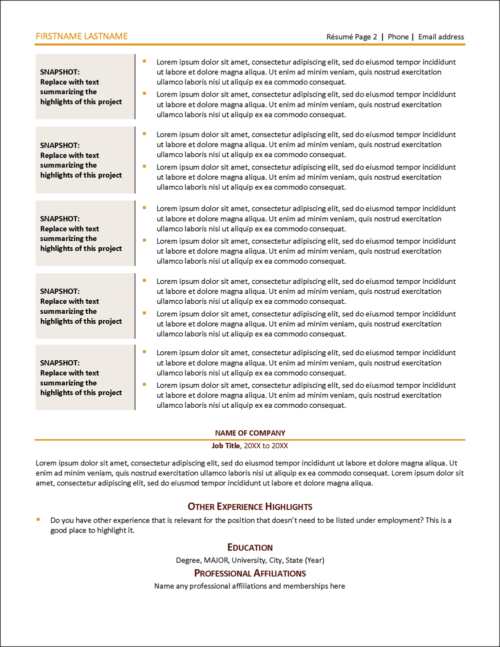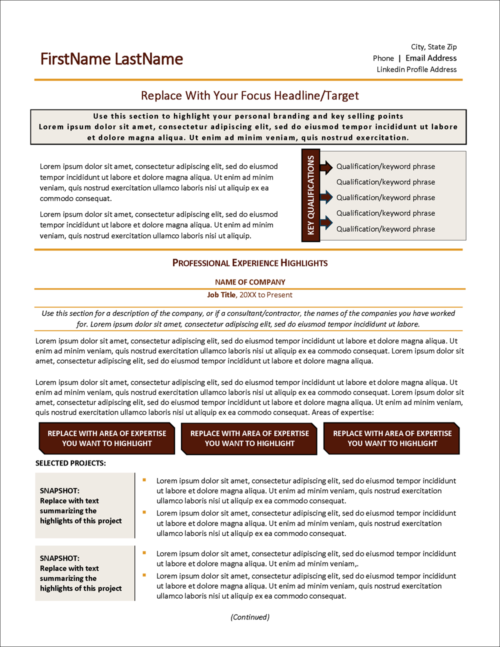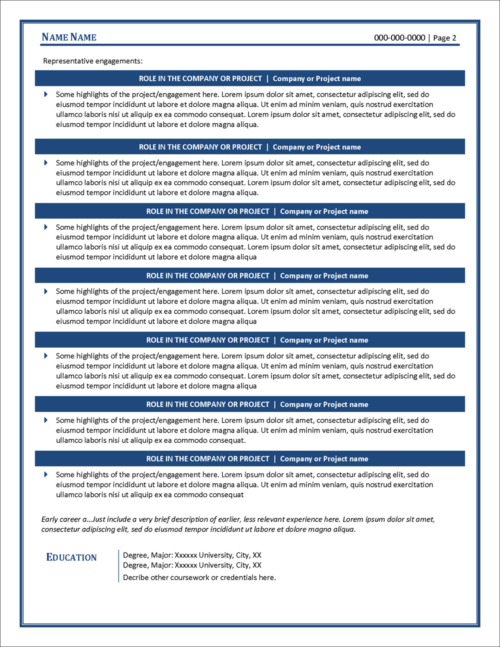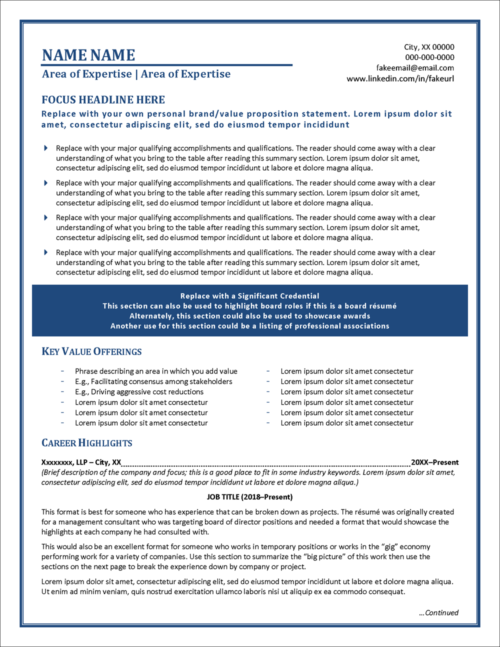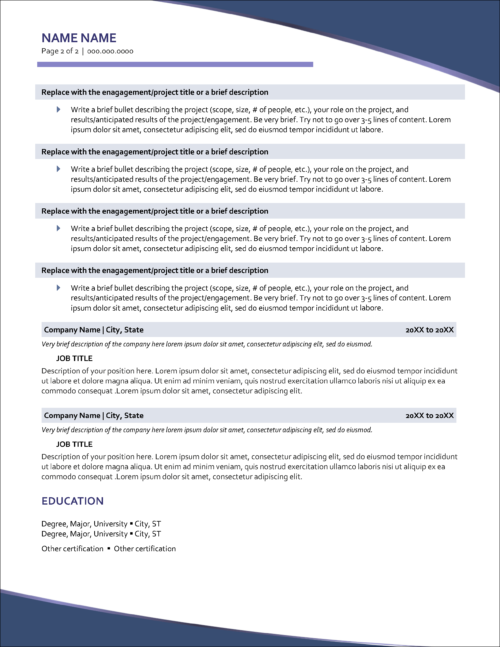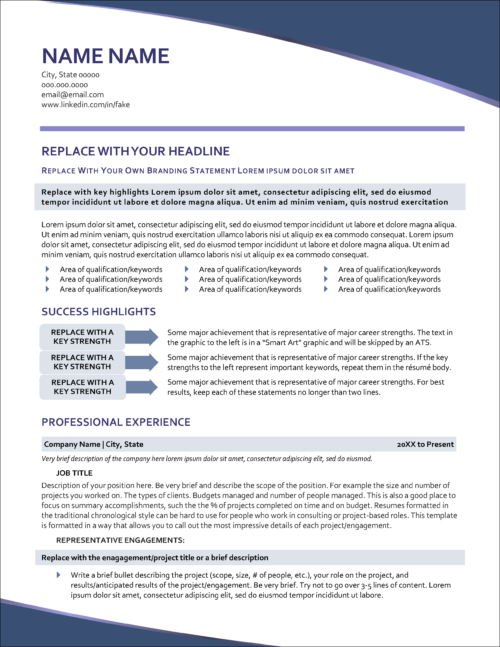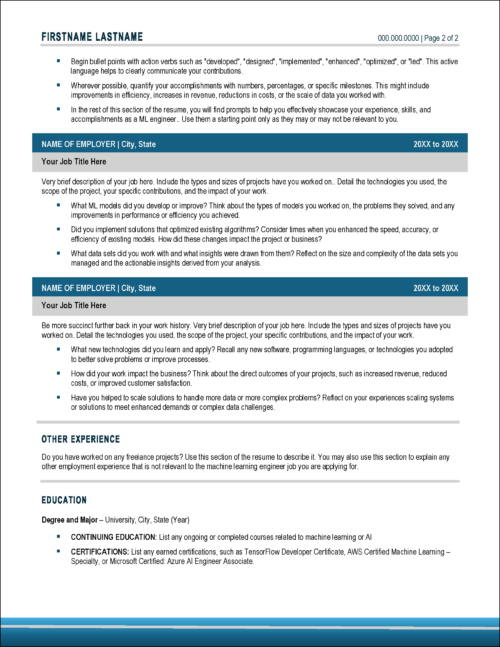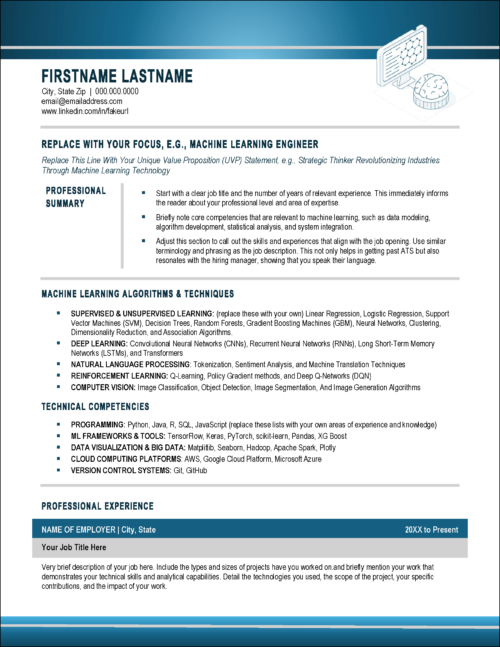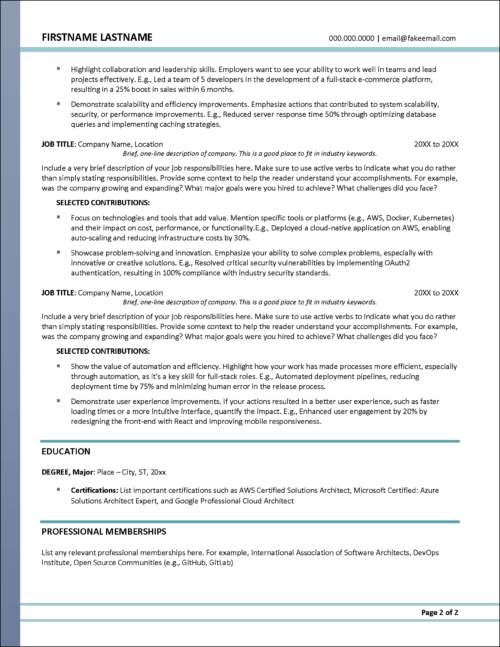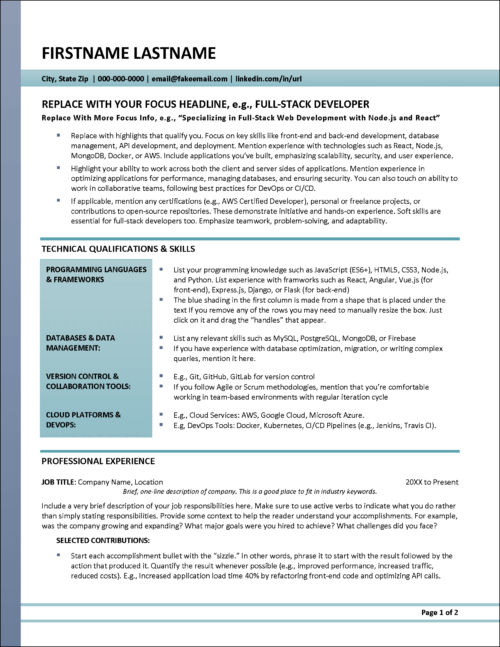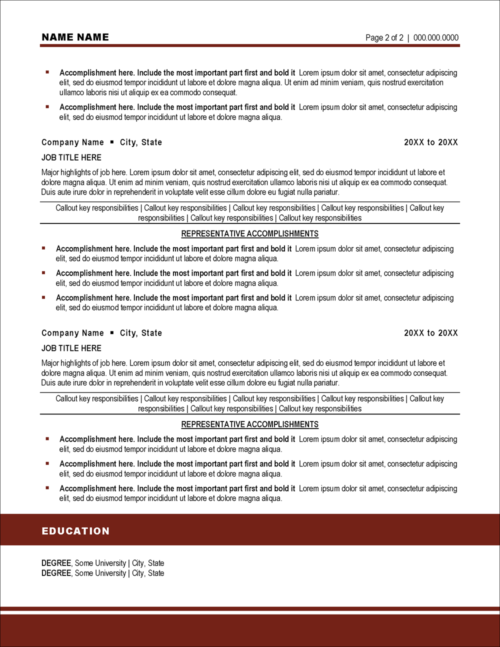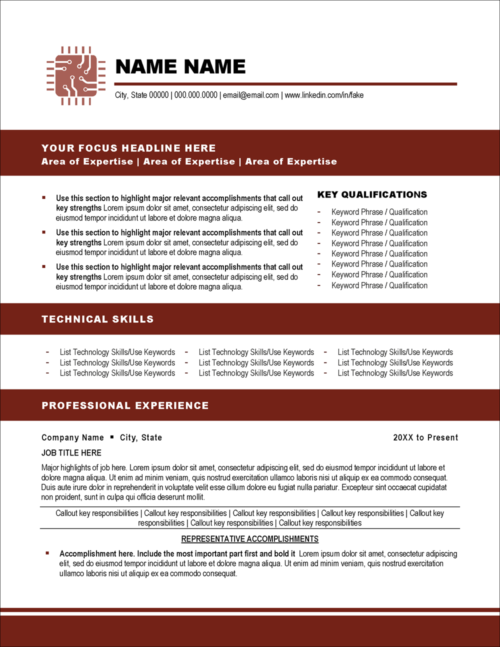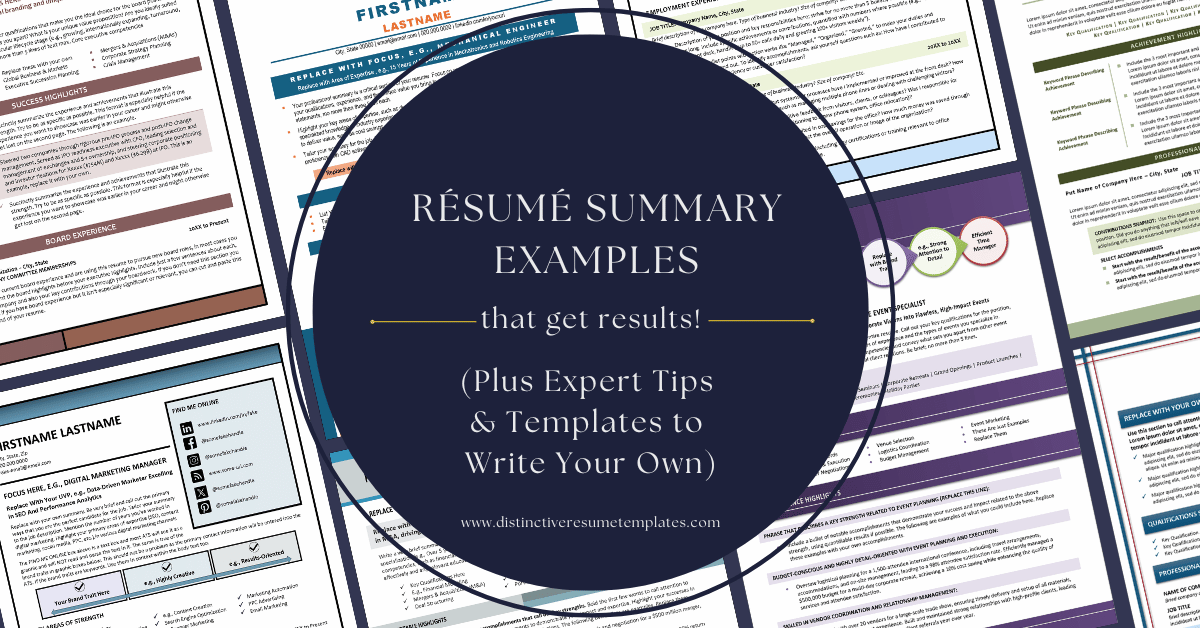
Making the jump from federal service to the private sector? You’re not alone. Whether you’re planning a career change or responding to recent workforce changes, one thing is clear: that lengthy federal resume that served you well on USAJOBS isn’t going to cut it in the corporate world.
But here’s the good news: you don’t have to figure this out alone. Modern tools—specifically well-designed resume templates and AI assistance—can help you showcase your valuable federal experience in a way that resonates with private-sector employers.
Think about it: you’ve developed incredible skills in your federal role. You’ve managed complex projects, overseen substantial budgets, and navigated intricate regulatory requirements. The challenge isn’t your experience—it’s presenting it in a way that makes private-sector hiring managers take notice.
That’s exactly what we’ll help you do in this guide. We’ll show you:
- How to choose the perfect resume template for your federal-to-private transition
- Ways to customize resume templates to highlight your most marketable skills
- Real examples of translating government-speak into corporate language
- Practical AI prompts to help refine your resume content
- Success strategies from others who’ve made this transition
The best part? By combining professional resume templates with AI tools, you can transform that 5+ page federal resume into a compelling 2-page resume that opens doors in the private sector. No more staring at a blank page, wondering how to begin.
Ready to turn your federal experience into your private sector advantage? Let’s dive in and select the right template for your transition.
Choosing the Right Resume Template for Your Federal Government to Private-Sector Transition
Let’s face it: staring at a blank document while trying to reinvent your federal resume is intimidating. That’s why starting with the right template is crucial. But not all resume templates are created equal—especially when you’re making the federal-to-private sector leap.
Key Features Your Resume Template Must Have
Professional Document Structure
- Clear, logical organization that guides the reader’s eye through the resume
- Standard section headings like “Professional Summary,” “Experience,” and “Education”
- Consistent formatting throughout the resume
- Clean document margins and appropriate white space to enhance resume readability
- A resume layout that works equally well in digital and printed formats
Strategic Content Organization
- Prominent professional summary at the top of the resume to grab attention
- Skills section that clearly presents your transferable competencies
- Experience section designed to highlight achievements and metrics
- Education and certifications positioned based on their relevance to your target role
- Optional sections for awards, publications, or other relevant credentials
Smart Space Management
- Room to tailor resume content for different job applications
- Flexible resume spacing that can expand or contract as needed
- Balanced distribution of text and white space throughout the resume
- Strategic use of resume formatting to create visual hierarchy
- Space for relevant keywords throughout the resume without appearing crowded
Resume Design Elements That Work
- Simple two-column tables for skills matrices
- Thoughtful use of resume color to create visual interest
- Basic graphic elements that enhance rather than distract
- Consistent alignment and spacing throughout the resume
- Resume headers that establish clear section breaks
Formatting Flexibility
- Easy-to-modify resume sections for customization
- Room to add or remove resume content as needed
- Adjustable spacing for different content lengths
- Options to emphasize key information in the resume
- Ability to maintain professional appearance regardless of content length
Remember: When transitioning from a federal resume, you’ll need extra flexibility to condense information while maintaining impact. Look for resume templates that give you room to showcase your most relevant achievements while allowing you to trim less crucial details.
Resume Templates That Work for Federal Transitions to the Private Sector
1. An Executive Transition Resume Template
Perfect for: GS-13 and above, Senior Executive Service (SES)
Key features:
- Strong executive summary section at the top
- Format that allows for ‘storytelling’ in the resume
- Dedicated space for high-level achievements
- Clean, sophisticated design that commands attention
Check out our entire portfolio of professional and executive resume templates. However, the three resume templates below would be excellent choices for an executive transition resume.
2. Project Management Focused Resume Templates
Perfect for: Program managers, technical leads, operations specialists
Key features:
- Highlighted areas for project metrics and outcomes
- Skills matrix for technical and management competencies
- Space for specific project achievements
- Timeline-friendly format for showing progression
Check out our entire collection of resume templates for consultants and project managers. However, the three resume templates below would be excellent choices for a federal service to private sector transition resume for anyone who worked in project-oriented work in the government.
3. Technical Specialist Resume Templates
Perfect for: IT specialists, analysts, subject matter experts
Key features:
- Prominent technical skills section
- Clear separation of technical and soft skills
- Room for certifications and security clearances
- Achievement-focused project highlights
Check out our entire collection of technical and IT resume templates. However, the three resume templates below would be excellent choices for a federal service to private sector transition resume for anyone who worked in technical jobs in the government.
Resume Template Red Flags to Avoid
Customizing Your Resume Template: Section-by-Section Guide
Remember that resume templates are frameworks, not rigid rules. Your chosen resume template should adapt to your story, not the other way around. Adjust section sizes to emphasize your strengths, modify headings to align with private sector terminology, and create space for standout achievements. The best resume templates maintain their professional appearance even with significant customization.
Also, keep in mind that modern ATS systems are sophisticated enough to handle most professional design elements, so don’t be afraid of thoughtful use of color or simple graphics. Just ensure any text that appears in graphics is also represented in the body of your resume, where ATS can parse it. The key is using resume design elements that enhance readability and visual appeal without compromising professionalism or ATS compatibility.
Let’s break down how to transform each section of your template for maximum impact in the private sector.
Your Resume Focus Headline: The Most Critical Three Seconds
Before we dive into the details of your new private-sector resume, let’s talk about the most important three seconds of your resume: the focus headline. This isn’t your grandfather’s objective statement (“Seeking a challenging position…”). Instead, it’s a powerful, focused statement that immediately tells the reader who you are professionally.
Why It Matters: Think of your focus headline as your professional elevator pitch in one line. When a recruiter opens your resume, you have about three seconds to communicate what type of role you’re qualified for. A strong focus headline does this instantly.
Example Focus Headlines for Federal Transitions:
Instead of: “Seeking a challenging leadership position in the private sector…”
Use:
- “SENIOR PROGRAM MANAGER | Strategic Operations & Process Improvement”
- “TECHNOLOGY DIRECTOR | Enterprise Systems & Digital Transformation”
- “OPERATIONS EXECUTIVE | Strategic Planning & Organizational Leadership”
Key Elements of an Effective Focus Headline
- Position or role you’re targeting (aligned with your experience)
- Key areas of expertise (separated by vertical bars or bullets)
- Industry-relevant keywords
- Clear alignment with the jobs you’re pursuing
Customizing Your Focus Headline for the Private Sector
When transitioning from federal service to the private sector, your focus headline needs to:
- Translate your government role into private-sector terminology
- Emphasize universal leadership or technical capabilities
- Avoid government-specific language or acronyms
- Align with common private-sector job titles in your field
AI Prompts to Help With Your Resume Headline
Prompt 1: “I am a [your federal job title and grade]. My main responsibilities include [list 3-4 key responsibilities]. What are the equivalent private sector job titles for someone with my experience? For each suggested title, explain why it matches my background.”
Example: “I am a GS-14 Program Analyst at USAID. My main responsibilities include managing a $30M annual budget, overseeing compliance for international aid programs, and coordinating with multiple stakeholder groups across 12 countries. What are the equivalent private sector job titles for someone with my experience?”
Prompt 2: “Help me translate my government role into private sector terms. Current title: [federal title]. Key achievements: [list 2-3 major accomplishments with metrics]. What focus headline would you recommend for my resume when applying to private sector jobs? Please provide 3 options with explanations.”
These prompts will help you understand how your federal experience aligns with private sector roles, giving you the language you need for a powerful focus headline. Remember to review the AI’s suggestions critically and verify them against actual job postings in your target industry.
Your Professional Summary Section
Your resume summary needs to quickly grab attention and frame your federal experience in business terms. Here’s how to make it work:
- Be succinct; 3-5 impactful lines are more effective than a lengthy block of unbroken text
- Lead with your most impressive transferable leadership or technical skills
- Include metrics that translate across sectors (budget size, team size, project scope)
- Remove government-specific language
- Focus on universal business achievements
Resume Summary Examples Translating Federal Service to Private-Sector Value
Instead of: “GS-14 Program Manager with 15 years of experience in federal acquisitions and FISMA compliance…”
Write: “Strategic program manager with a 15-year track record leading multimillion-dollar initiatives and driving operational excellence. Experienced in managing $50M+ budgets and cross-functional teams of 100+. Known for innovative process improvements that reduce costs while enhancing quality and compliance.”
Instead of: “Senior Executive Service (SES) member overseeing policy implementation and agency directives for the Department of Energy’s environmental management division…”
Write: “Executive leader and change agent with extensive experience transforming complex organizations and driving large-scale environmental initiatives. History of building high-performing teams and delivering $100M+ programs on time and under budget. Expert at translating strategic vision into measurable results while fostering stakeholder buy-in at all levels.”
Instead of: “GS-13 Information Systems Security Officer implementing NIST frameworks and managing ATO processes across multiple federal systems…”
Write: “Cybersecurity leader with proven expertise securing enterprise-level systems and protecting sensitive data for organizations with 10,000+ users. Track record of implementing robust security frameworks that balance innovation with compliance. Demonstrated success reducing security incidents by 75% while accelerating system authorization processes.”
Effective AI Prompts for Professional Summary Development
Prompt 1: “I’m a [federal job title] transitioning to the private sector. Here are my top 3 achievements with metrics: [list achievements]. Please help me write a powerful 3-sentence professional summary that emphasizes these accomplishments in business terms, avoiding government jargon. Include specific numbers and results.”
Prompt 2: “Review this professional summary from my federal resume: [paste summary]. Please rewrite it for a private sector audience, emphasizing transferable skills and measurable impacts. Remove government-specific terms and focus on universal business value. Keep it to 3-5 lines.”
Prompt 3: “I want to target [private sector role] positions. My federal background includes: [list key responsibilities and achievements]. Help me write a professional summary that positions my government experience as relevant preparation for this private sector role. Include specific metrics and achievements.”
Skills Section: Your Keyword Strategy Center
The skills section of your resume isn’t just a list—it’s a strategic tool for showcasing your transferable expertise and ensuring your resume gets past ATS and into human hands. Here’s how to make it work harder for you:
Organizing Your Skills
Create clear categories that resonate in the private sector:
- Leadership & Management
- Technical Expertise
- Project & Program Management
- Financial & Budget Management
- Stakeholder Relations
Within each category, focus on universal business competencies first, followed by specialized skills relevant to your target industry.
Keyword Strategy
Your skills section is prime real estate for including important keywords. But there’s an art to doing this effectively:
Do:
- Use industry-standard terminology
- Include both hard and soft skills
- Match keywords from target job descriptions
- Present skills in the context of achievements when possible
Don’t:
- List government acronyms without translation
- Include outdated or irrelevant skills
- Stuff keywords without context
- Use internal government terms
Translating Government Federal Service Terms to Private Sector Language
Instead of: “COTR certification”
Write: “Vendor management” and “Contract oversight”
Instead of: “GS-15 supervisory experience”
Write: “Executive leadership” and “Strategic planning”
Instead of: “FISMA compliance”
Write: “Information security governance” and “Regulatory compliance”
Expert Tips for Keyword Research
- Collect 5-10 job descriptions for your target role
- Highlight recurring skills and requirements
- Note industry-specific software or certifications
- Pay attention to soft skills that appear frequently
- Look for variations of key terms (e.g., “project management,” “project leadership,” “program management”)
AI Prompts for Resume Skills Section Development
Prompt 1 (Job Description Analysis): “I’m applying for private sector [type of] positions. Here’s a job description: [paste job description]. Please analyze it and:
- Extract the most important keywords and skills
- Group them by category (technical, leadership, etc.)
- Suggest additional related skills that might be valuable”
Prompt 2 (Government Term Translation): “I have the following skills from my federal role: [list government-specific skills and certifications]. Please help me translate these into private-sector terminology that hiring managers will understand. For each term, provide 2-3 alternative ways to express it in business language.”
Prompt 3 (Skills Gap Analysis): “Here are my current skills: [list your skills]. Here’s a job description I’m targeting: [paste description]. Please:
- Identify which of my skills align with the job requirements
- Suggest how to describe my existing skills in terms that match the job posting
- Point out any critical skills gaps I should address”
Building Your Skills Matrix
Once you’ve gathered your resume keywords and translated your federal service experience into private sector terms, create a skills matrix that serves as your master reference document. This matrix may or may not appear in your actual resume, but it’s an invaluable tool for ensuring you highlight the right skills throughout your resume.
Create a matrix that:
- Prioritizes most relevant skills first
- Groups related skills logically
- Uses consistent formatting
- Balances technical and soft skills
Example Skills Matrix Format:
LEADERSHIP & MANAGEMENT Strategic Planning • Change Management • Team Leadership (100+ Staff) • Budget Oversight ($50M+)
TECHNICAL EXPERTISE Enterprise Systems • Data Analytics • Process Automation • Compliance Management
PROJECT MANAGEMENT Agile Methodologies • Risk Management • Stakeholder Engagement • Cross-functional Team Leadership
Using Your Skills Matrix
This matrix serves multiple purposes:
Direct Use in Resume:
- You might include it as a dedicated skills section if your template and industry norms support this approach
- It could appear as a brief highlight box or summary section
- It might be integrated into your professional summary
Strategic Reference Tool:
- Use it as a checklist when writing experience bullet points
- Ensure key skills appear with specific examples in your work history
- Reference it when tailoring your resume for different positions
- Keep track of important keywords you need to incorporate naturally throughout your resume
Remember: Whether or not you include a formal skills section, every important skill in your matrix should appear somewhere in your resume, supported by concrete examples of how you’ve used that skill. In the next section, we’ll cover how to weave these skills into your experience section effectively.
Your Resume Experience Section: Translating Your Federal Impact
The experience section of your resume is where many federal employees struggle most—but it’s also where you have the greatest opportunity to showcase your value. Let’s break down how to transform your government experience into compelling private-sector achievements.
The Basic Formula for Each Role:
- Clear position title that private sector understands
- Brief overview of scope and responsibility
- 3-5 strong achievement bullets
- Metrics whenever possible
- Keywords from your skills matrix woven naturally into descriptions
Before and After Examples Resume Experience Listings:
Leadership Role Example:
Instead of: “Served as Branch Chief (GS-14) managing Administrative Services Division with oversight of 12 FTEs and 3 contractors. Responsible for implementation of agency directives and maintaining compliance with federal regulations.”
Write: “As the division director, led comprehensive administrative operations for a 500-person organization, managing a $12M budget and 15-person team. Spearheaded process improvement initiatives that:
- Reduced operational costs 23% through strategic vendor consolidation and automation
- Decreased processing time for key transactions from 14 days to 3 days
- Achieved 100% compliance while reducing audit findings 85%
- Led change management initiatives that improved employee satisfaction scores 40%”
Technical Role Example:
Instead of: “ISSO responsible for FISMA compliance and ATO process for 15 major systems. Conducted annual security assessments and maintained POA&M documentation.”
Write: “As information security manager, directed enterprise cybersecurity program that protected critical infrastructure serving 20,000+ users across 15 major systems. Key achievements:
- Engineered security frameworks that reduced system vulnerabilities 75%
- Streamlined authorization processes, cutting approval time from 6 months to 6 weeks
- Implemented automated monitoring solutions that saved 1,200 staff hours annually
- Led cross-functional teams to achieve zero security breaches across all systems”
AI Prompts for Resume Experience Section Development:
Prompt 1 (Achievement Translation): “Here’s a bullet point from my federal resume: [paste bullet point]. Please help me rewrite this for a private sector audience by:
- Removing government-specific jargon
- Emphasizing measurable results
- Using active, powerful verbs
- Suggesting 2-3 alternative ways to phrase it
Please provide an explanation for your changes.”
Prompt 2 (Metrics Extraction): “Review this description of my federal role: [paste description]. Help me identify potential metrics and quantifiable achievements that would interest private-sector employers. For each responsibility, suggest ways to measure and present the impact.”
Prompt 3 (Job Description Alignment): “Here’s a job posting I’m targeting: [paste job description]. Here’s a section from my federal resume: [paste experience section]. Please help me:
- Identify which of my experiences align with the job requirements
- Suggest how to rephrase my achievements to match their priorities
- Point out any gaps I should address or skills I should emphasize”
Expert Tips for Resume Experience Section Writing:
Focus on Universal Impact:
- Every bullet should answer “So what?” from a business perspective
- Lead with results whenever possible
- Use metrics that translate across sectors
- Emphasize efficiency, cost savings, and process improvements
Avoid Government-Speak:
Instead of: “Managed CPIC process for IT investments…”
Write: “Led $30M technology investment portfolio, achieving 28% ROI…”
Instead of: “Served as COR for multiple contracts…”
Write: “Managed vendor relationships and contracts valued at $25M annually…”
Remember: Your experience section should tell a clear story of progression and impact. Use your skills matrix as a reference to ensure you’re incorporating key keywords naturally through specific examples and achievements.
Education and Additional Sections: Highlighting What Matters Most
The final sections of your resume need to reinforce your value proposition without distracting from your core qualifications. Here’s how to handle these elements strategically.
Education Section
Position Based on Relevance:
- Early career: Keep education near the top
- Mid to senior career: Move it toward the bottom
- Exception: If transitioning to a field where your degree is highly relevant
Formatting Tips:
- List degrees in reverse chronological order
- Include only completed degrees unless currently enrolled
- Remove graduation dates if over 15 years ago
- Focus on relevant coursework only if directly applicable to the target role
Example:
Instead of: “Master of Public Administration, American University, GPA: 3.8, Graduated 2005 Thesis: “Impact of Federal Hiring Practices on Agency Effectiveness””
Write: “Master of Public Administration, American University, Concentration in Organizational Leadership”
Certifications & Clearances
Present security clearances and certifications strategically:
Government Clearances:
- Include clearances if relevant to target industry (defense contractors, etc.)
- State simply: “Active Top Secret Security Clearance”
- Remove detailed investigation dates/numbers
Professional Certifications:
- List current, relevant certifications first
- Include expiration dates only if required
- Remove outdated or irrelevant government-specific certifications
- Add pursuit of relevant private sector certifications if in progress
Example:
Instead of: “- Certified Contracting Officer’s Representative (FAC-COR Level III)
- Certified Defense Financial Manager (CDFM)
- Information System Security Officer (ISSO) Certification
- Active TS/SCI with CI Poly (Investigation Date: 01/2022)”
Write: “- Project Management Professional (PMP)
- Certified Information Systems Security Professional (CISSP)
- Active Top Secret Security Clearance”
AI Prompts for Education & Credentials:
Prompt 1 (Certification Relevance): “I have these government certifications: [list certifications]. I’m targeting [type of] private sector roles. Please:
- Identify which certifications are valuable in the private sector
- Suggest equivalent private sector certifications
- Recommend additional certifications that would strengthen my profile”
Prompt 2 (Education Enhancement): “I have [degree] with coursework in [subjects]. I’m targeting [industry/role]. Help me identify:
- The most relevant aspects of my education for this field
- How to present my education to emphasize applicable knowledge
- Any educational gaps I should consider addressing”
Additional Sections to Consider
Professional Affiliations:
- Focus on industry-relevant organizations
- Include leadership roles or significant contributions
- Remove government-specific associations unless relevant
Publications/Presentations:
- Include if they demonstrate thought leadership
- Focus on topics relevant to target industry
- Translate technical topics into business value
Awards:
- Translate government awards into business impact
- Focus on measurable achievements
- Remove agency-specific awards unless prestigious
Example:
Instead of: “Recipient of Deputy Administrator’s Award for Excellence in Federal Service, 2022”
Write: “Recognized for leadership of process improvement initiative that saved $2.1M annually (2022)”
Bringing It All Together: Your Federal Service-to-Private Sector Resume Action Plan
Now that we’ve covered all the individual components, let’s create a systematic approach to transforming your federal resume into a powerful private-sector marketing tool.
Step-by-Step Implementation Strategy
1. Start with Research and Planning
- Collect 5-10 target job descriptions
- Create your skills matrix
- Identify key metrics from your federal experience
- Gather performance reviews and award documentation
- List your major projects and achievements
2. Draft Your Core Content
Begin with:
- Focus headline
- Professional resume summary
- Most recent role
3. Review and Refine
After your first draft:
- Read aloud to catch government jargon
- Verify all metrics and achievements
- Check keyword integration
- Ensure consistent formatting
- Test readability on both screen and paper
Common Pitfalls to Avoid
Don’t:
- Rush to send applications with a partially revised resume
- Use different formatting styles within the same document
- Keep content just because it was important in your federal role
- Assume private sector hiring managers understand government terms
Do:
- Take time to tailor for each application
- Maintain consistent storytelling throughout
- Focus on results and business impact
- Get feedback from private sector professionals
AI-Assisted Resume Fine-Tuning:
Final Review Prompt: “Here’s my completed resume: [paste resume]. Please review it as a private sector hiring manager would and:
- Identify any remaining government jargon
- Highlight areas where impact could be more clearly demonstrated
- Suggest ways to strengthen the overall narrative
- Point out any red flags or missing elements”
Ongoing Resume Maintenance
Create a system to:
- Track different versions of your resume
- Document feedback received
- Note successful language and phrases
- Keep your skills matrix updated
- Save job descriptions that resonate with your goals
Remember: This transition is often iterative. Don’t expect perfection in your first draft. Instead, focus on continuous improvement based on feedback and results.
Success Metrics for Your Federal Service-to-Private Sector Resume
Your revised federal service-to-private sector resume is working if:
- You’re getting responses to applications
- Recruiters can quickly understand your value
- Interviews focus on your achievements rather than seeking clarification
- Private sector professionals can easily explain what you do
- You feel confident explaining your experience in business terms
Final Thoughts
The shift from federal service to private sector employment is significant, but your experience is valuable. The key is presenting it on your resume in terms that resonate with your target audience. Use these guidelines as your roadmap, but don’t be afraid to adjust based on feedback and results. Your goal is not just to create a different resume but to reframe your professional narrative for this next exciting chapter in your career.
Need help with design and formatting for your federal service to private sector resume? Download one of our professionally designed ATS-friendly resume templates today. They’ll make creating your federal service to private sector resume fast and easy! For additional advice and guidance, check out these professionally written example federal government to private sector transition resumes.
